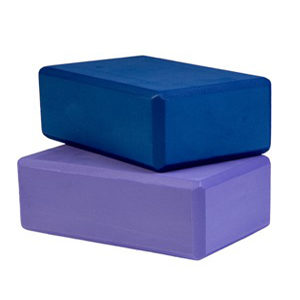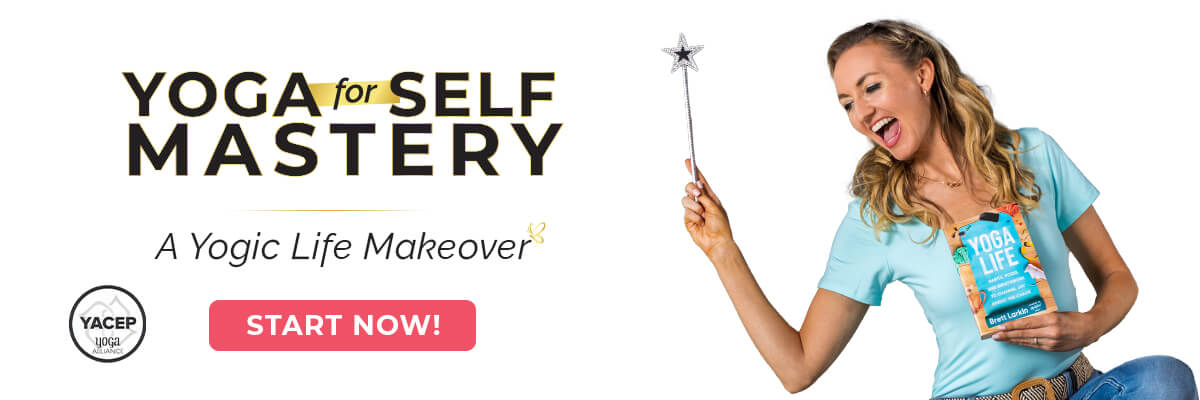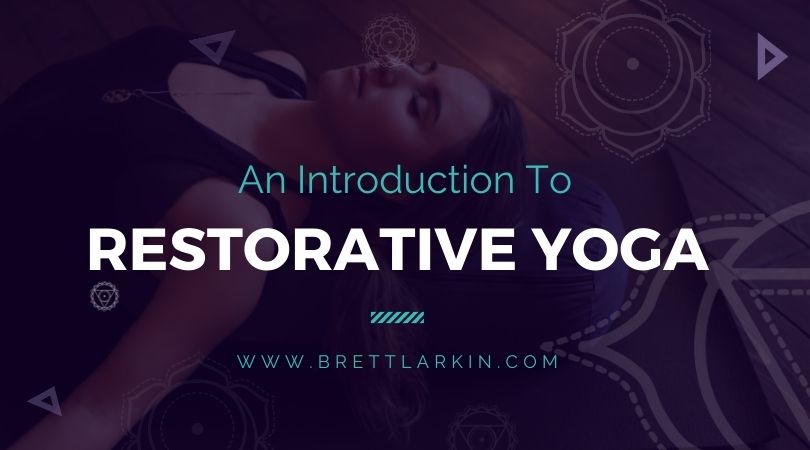
I’m back, yoga fam! And with another often mysterious and misunderstood style of yoga: restorative yoga.
If you’re unclear about what restorative yoga is, please read on because this type of yoga deserves a spot on your list of go-to yoga resources!
Even if you don’t end up being an enthusiastic restorative teacher, you’ll want to know what this style is all about so you can be a reliable authority for your students and recommend it to the people who could use it—maybe all of us!
What Is Restorative Yoga?
It’s always helpful to explore a new subject by looking at its name.
What exactly is being “restored” in restorative yoga?
In essence, both body and mind are restored by way of the nervous system.
In restorative yoga, we fully support postures with props and hold positions for longer periods of time to encourage the nervous system into a relaxation response.
You can use a restorative yoga practice for several purposes including bolstering the immune system, releasing physical tension, mental and emotional healing, anxiety and stress relief, and more!
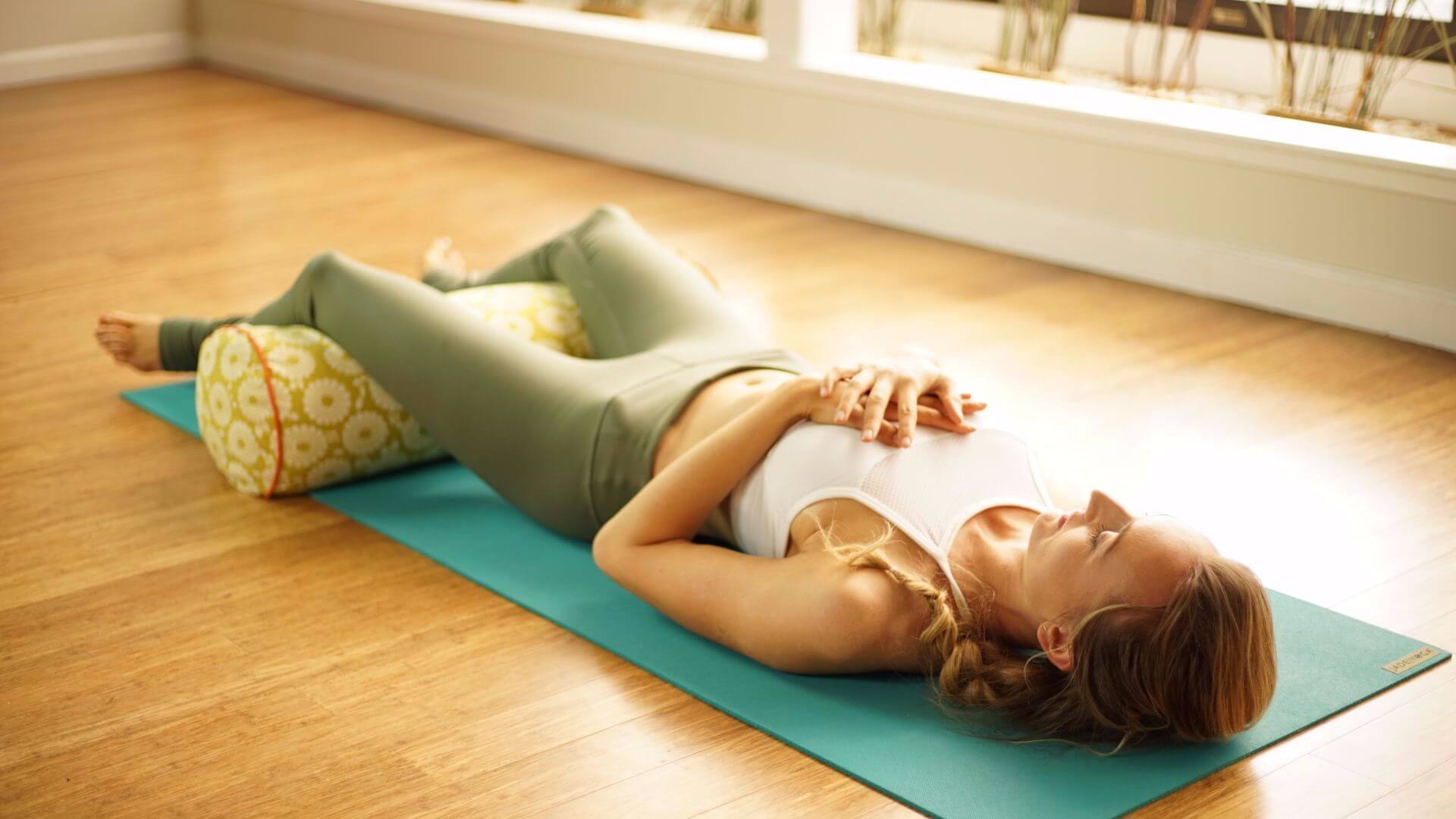
How Does Restorative Yoga Compare to Other Yoga Types?
The types of yoga that many people confuse restorative with are Yin yoga and Gentle yoga. While they do have similarities, in terms of purposes and practices they are quite different.
In general, restorative yoga is about deep rest! Long holds and ample prop support help the practitioner let go and experience deep release.
Yin yoga poses also involve holding the body in stillness for long periods of time, but the focus is on lengthening connective tissue and fascia and clearing energetic blocks. As such, Yin yoga practitioners may experience a lot of sensation or even mild stress that might be addressed through breath-work. Restorative yoga, on the other hand, aims for deep relaxation so there is no stretching sensation or strain in the poses so that the nervous system shifts into rest and digest (parasympathetic) mode.
“Gentle yoga” is often used to refer to a slower-paced vinyasa yoga or hatha yoga class. It may contain more accessible poses and generally be more on the “stretching” end of the yoga class spectrum than the “strengthening” end. But it’s typically still somewhat dynamic and active and could elevate your heart rate. On the other hand, restorative yoga classes involve little movement and focus on a handful of passive and static poses.
How Does Restorative Yoga Work?
At a base level, restorative yoga helps shift the nervous system from fight or flight mode (the sympathetic nervous system) into rest, digest, mend, and heal mode (the parasympathetic nervous system).
So how does it do this? By relaxing the body in stillness for long periods of time with full support.
The parasympathetic nervous system slows the breath, lowers the heart rate and blood pressure, and increases blood flow to vital organs. This creates a relaxation response that releases tension and stress in the body and mind.
Reasons to Practice Restorative Yoga
In a nutshell: For improved well-being, recovery, and healing!
Our bodies are capable of healing when the nervous system is in a relaxation response. However, most of us are so busy that our nervous systems don’t spend enough time in parasympathetic mode—our body’s healing mode—unless we’re forced to via illness, injury, breakdown, or burnout.
A regular restorative yoga practice helps us prevent these things and balance our active daily lives as it encourages our nervous system into a relaxation response, which activates our body’s self-repair mechanisms for improved physical, mental, and emotional recovery.
Plus, if you love the warm and fuzzy feeling you get during corpse pose, restorative yoga is basically an hour of that! (Also, be aware of that in case you’re not a fan of corpse pose. And for you teachers out there, know that that’s not uncommon.)
Benefits of Restorative Yoga
Restorative yoga helps people with:
- Improved sleep quality
- Reduced anxiety
- Enhanced immune system functioning
- Elevated and stabilized mood
- Mental and emotional relaxation and release
- Pain reduction
- Physical recovery
3 Tips for How to Practice Restorative Yoga For Relaxation and Healing
A little prep goes a long way with restorative yoga. Take your time to get set up with props that suit you, and a supportive practice environment either at home or in a studio.
1. Use Props
Your aim for every pose is bountiful support. I’m talking about feeling like you’re floating-on-a-cloud type of support where every part of you has support beneath it. My advice: The more props the better!
2. Practice in a Studio or Program
Practicing in a studio or with a program is fantastic because they’ll have aaaaall the goodies (sandbags and oil diffusers and eye pillows, oh my!) Plus, we often don’t carve out time to rest on our own so a studio or program gives us the structure to simply show up and be guided.
My advice: Buy a pass or otherwise commit to your restorative teacher that you’ll practice at least once a week for a month and see for yourself what body-mind benefits you receive.

3. Practice at Home
Okay, just because I said that it’s great to go to a studio, that doesn’t mean you shouldn’t practice at home too! When you can’t block out time for a full-length restorative yoga sequence, hop in bed a few minutes early and do a long child’s pose or put your legs up the wall.
My advice: Gather all the soft and fluffy blankets and things in your house and make each pose feel like an absolute dream.
What to Expect in a Restorative Yoga Class
Here’s what to expect in a restorative yoga session:
- More silence – While some teachers might include a guided meditation, yoga nidra, deep breathing, or mindfulness practice, there will generally be less talking than your average class. It’s normal for your attention to wander at first, but after the first couple of postures your body and mind will begin to calm.
- A focus on comfort – There is no stretching or strain in restorative yoga.
- Longer holds in stillness – This could take some getting used to, but give yourself a few classes to observe how it affects you.
- Lots of props – Your yoga teacher will walk you through setting up your props in each position. If you’re an eye-pillow lover, you can even bring your own!
- Leaving a bit sleepy – If you’re driving home after a restorative yoga class, you might want to bring some dates or almonds to perk you up before you get behind the wheel.
How Many Poses Are Typically in a Restorative Yoga Class?
In terms of the number of poses, restorative classes are on the lower end so that students have time to set up the poses and stay in them long enough to activate the parasympathetic nervous system.
A one hour class will usually include 5-6 poses.
How to Become a Restorative Yoga Teacher
Whether you’re already a certified yoga teacher or just thinking about doing a yoga teacher training, it’s important to be able to teach different styles of yoga classes including a restorative class. And the great news is that you don’t have to be a yoga therapist to offer this therapeutic type of yoga.
If you already have a yoga teacher certification, doing a 10 or 20 hour restorative yoga training could be an excellent way to continue to grow as a teacher. And if you’re thinking about becoming a yoga instructor and you like restorative yoga, choose a 200-hour YTT that includes restorative yoga in the curriculum.
Common Questions About Restorative Yoga
Is Restorative Yoga Good for Weight Loss?
Directly, no. Indirectly, possibly.
While restorative yoga is not going to elevate our heart rate to increase calorie burn, it does help us relax! This can balance our energy levels so we have fewer tired slumps that might make us reach for the treats. Less stress can also lead to less stress eating and having space for emotions to arise and process could help decrease emotional eating too.
How Often Should I do Restorative Yoga?
I would shoot for at least twice a month. Once a week or more is even better! Even doing one restorative posture a day could have a positive effect on your life.
Does Restorative Yoga Build Muscle?
Nope, this style is totally passive. Try one of the other heat-building styles of yoga asana if strength is what you’re looking for.
But if you’re doing other strength building practices, restorative could help you with those #gains because it’s during rest that our muscles repair and rebuild.
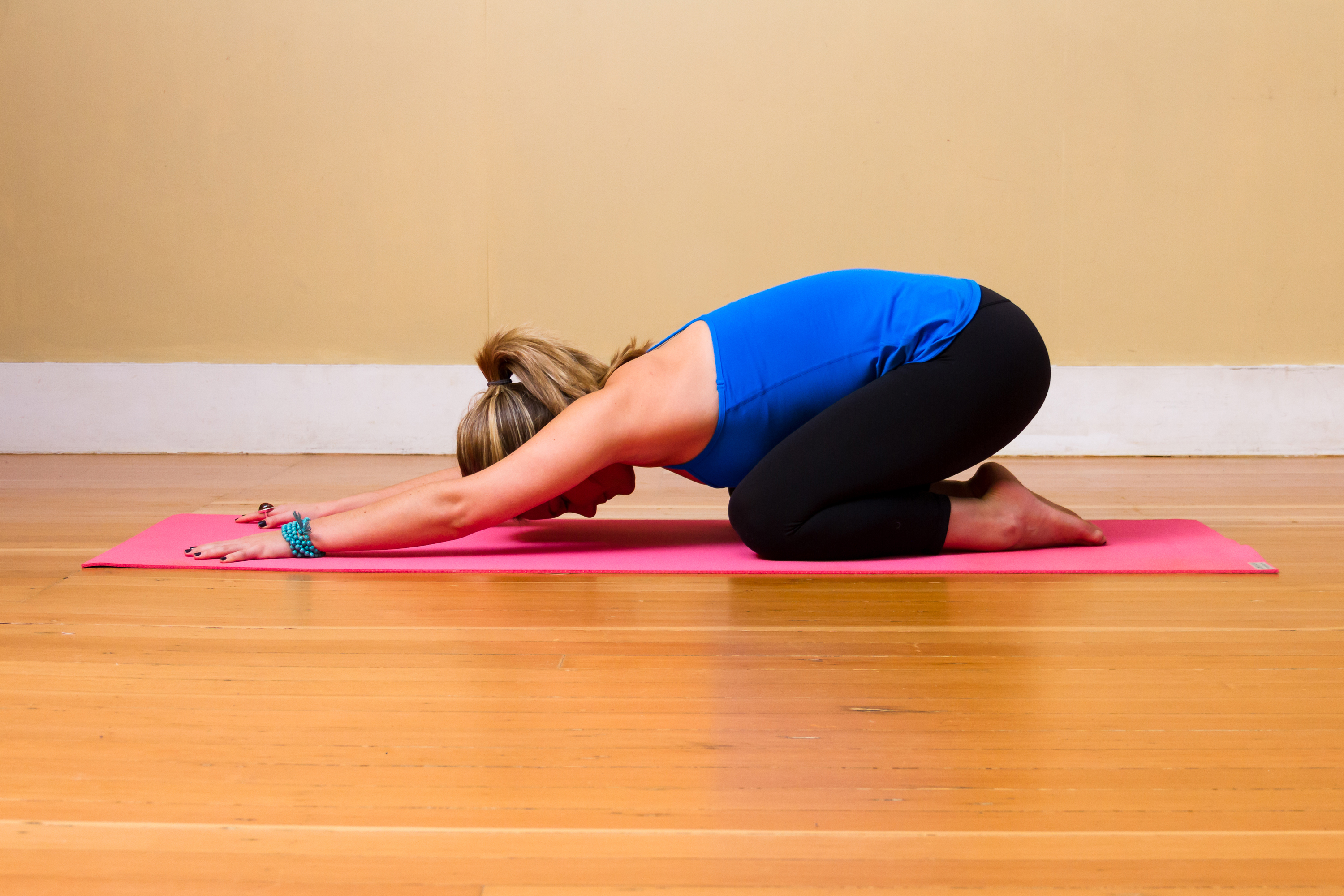
Can I do Restorative Yoga Every Day?
Totally! You can get a lot of the benefits of restorative yoga with even just a few poses a day.
Is Restorative Yoga Good for Back-Pain?
Absolutely!
Psycho-emotional tension can be a contributor to back pain. As restorative practice and deep breathing invite deep calm into the body and mind, we can release some of the tissues and emotional tension that contribute to lower back pain.
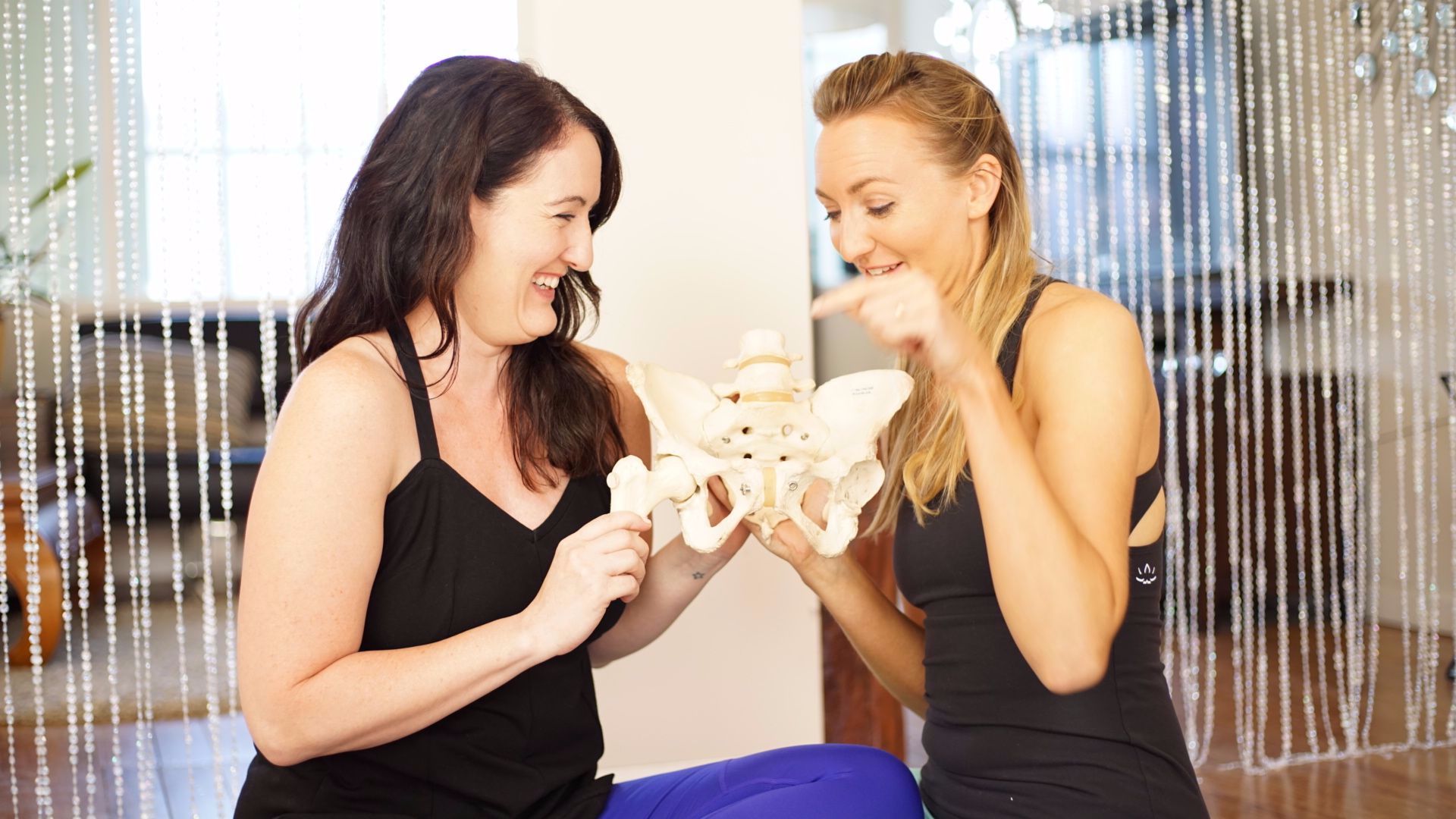
What are Some Restorative Yoga Poses?
Here are ten of my favorite restorative poses that quickly bring the chill.
What Props do You Need for Restorative Yoga?
One of the things I love about restorative yoga is you can use what you find on your couch or bed! If you don’t have straps or a yoga block, a blanket, a couple pillows, and a couch cushion are perfect. Rolled up towels or an eye bag are bonuses!
How Long do You Hold Poses in Restorative Yoga?
You want to give your muscles a chance to release and your body-mind a chance to activate the relaxation response so aim for 5-15 minutes in each restorative pose.
Can You do Restorative Yoga Without Props?
Yes! No blocks or belts needed! While restorative is powerful with props, the poses can be done without.
Next Steps
- If you’re interested in learning the three skills that empower you to embody your yoga off the mat to get the results you desire in your personal life, check out my Yoga for Self Mastery course.
- Explore my knowledge hub for How to Become a Yoga Teacher or consider becoming a Somatic Yoga Coach in my newest certification program.
- Practice yoga with me on my YouTube channel with over a thousand free classes.
Experience 3 Training Videos from Inside My 200-Hour Online YTT

Find more yoga sequences by benefit.
YOU MIGHT ALSO LIKE
- How to Teach Somatic Yoga: A Practical Guide for Instructors
- The Best Somatic Exercises for Grief: Find Healing Through Movement
- The Best Somatic Exercises for Anger Management and Emotional Release
- Authentic Pathways: Connecting With Higher Self for Inner Peace
- Yoga to Reconnect with Yourself: 5 Essential Practices for Inner Peace
- Yoga for Connection: 10 Poses to Deepen Relationships and Bonding
- Yoga To Connect With Your Body For Mind-Body Harmony
- Yoga to Connect with Feminine Energy: 5 Transformative Practices
- Yoga to Connect with Your Heart: 3 Poses for Emotional Balance
- Myofascial Release Yoga: Unlock Tension and Improve Flexibility
- 6 Hip Openers For Emotional Release
- Office Yoga: 10 Poses You Can Do Right Now
- Ayurveda Food Combining: The Key to Balanced Digestion
- Yoga For Grief: 8 Yoga Poses For Support
- Yoga for Vata Dosha: Practice Poses and Tips
Learn how to do 11 of the most popular yoga poses correctly. Free video + PDF download.


